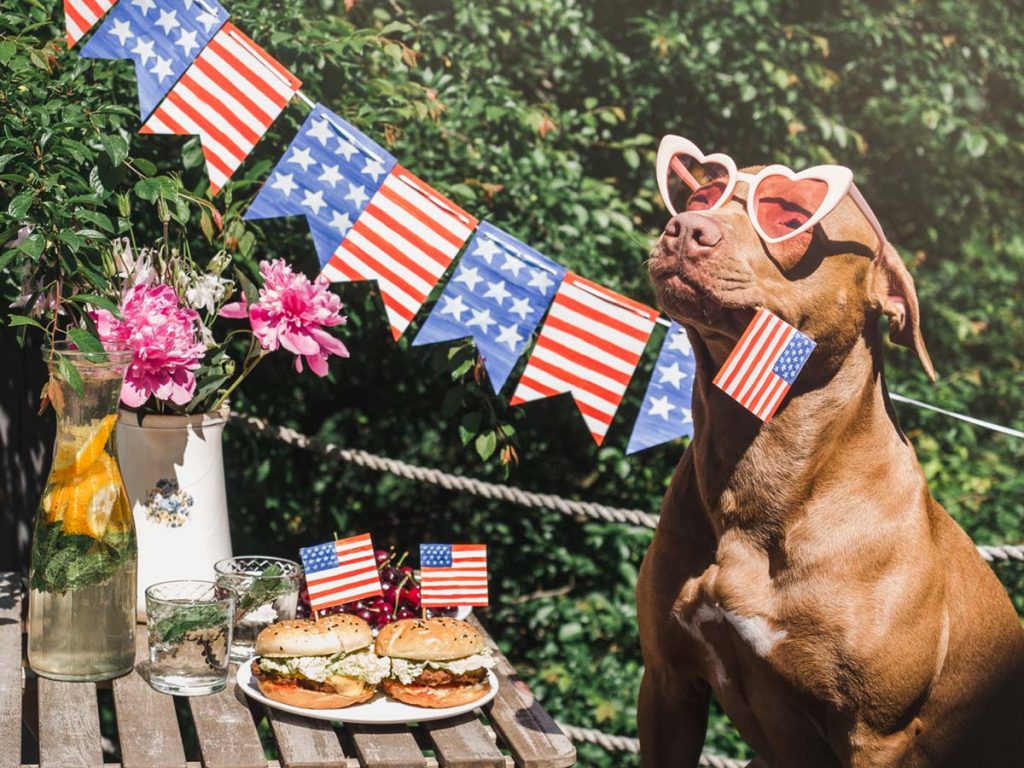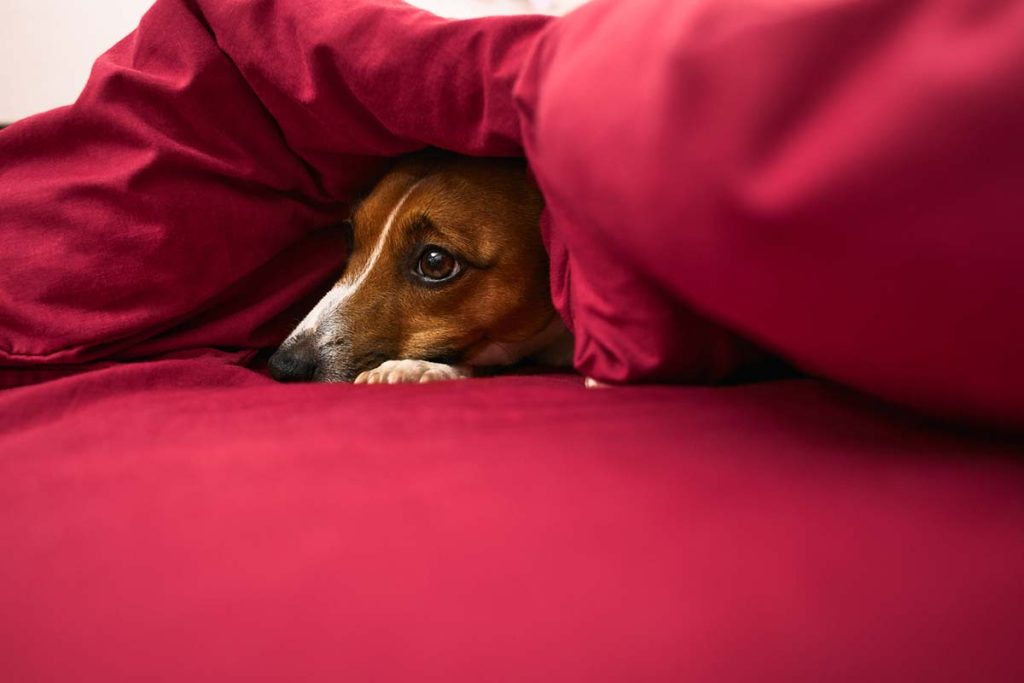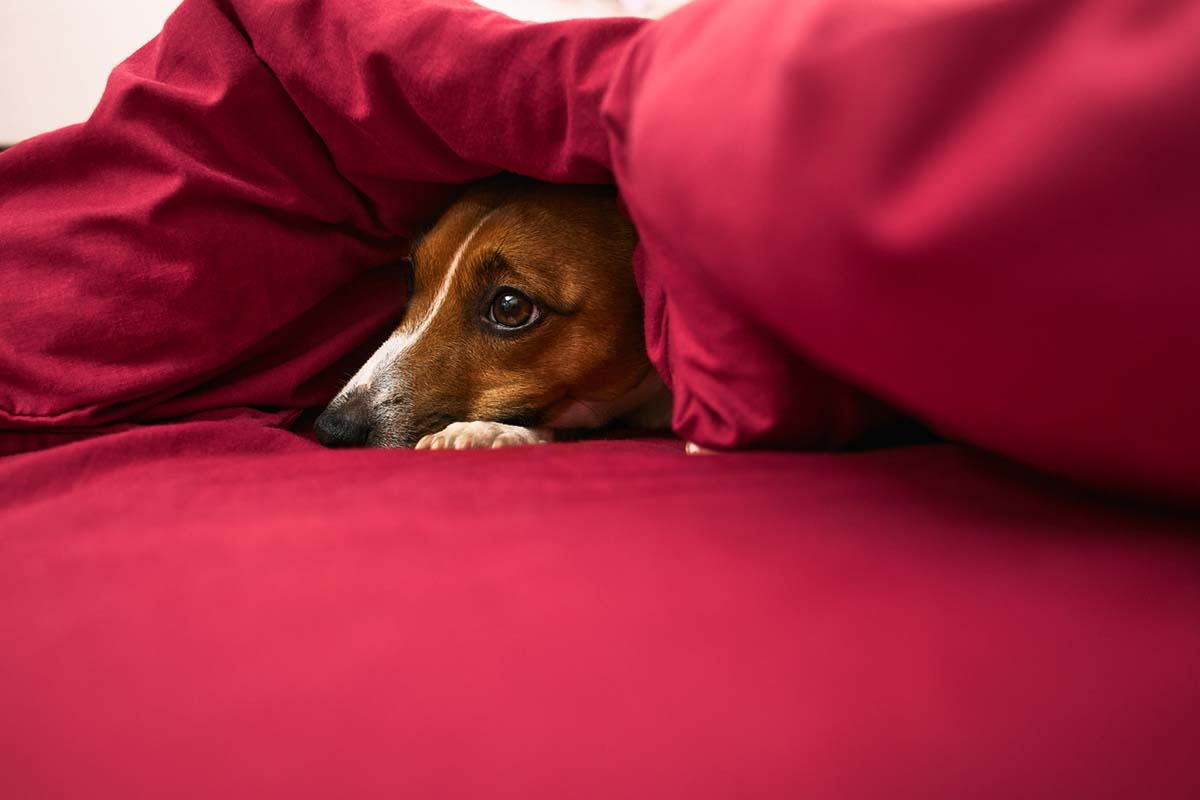Some consider the Fourth of July to be the most fun holiday of the summer, but for many of our four-legged friends, it’s a living nightmare. It can be stressful and even heartbreaking to see your beloved pet quiver in fear during thunderstorms and fireworks season. As dog owners, we want our pets to feel safe and happy instead of anxious and scared.
Not only do they cause your pets to get fearful or anxious, but loud noises like fireworks are a serious threat to wildlife. Birds, for example, may abandon their nests to flee the noise, never to return. Others simply run away so far that they get orphaned from their habitats or run into a road to be hit by a car.
Firework anxiety is very real, so it’s important for pet parents to prepare a safe space for their dog or cat during the festivities.
How to Calm Your Dog During Fireworks

There are a number of methods you can use to calm an anxious dog on the 4th of July. Consider combining several of the options below.
1. Natural calming supplements
Keeping your pooch calm during firework day actually starts a couple of days before the big event. If you use a calming supplement, give the recommended dosage to your pup every 12 hours starting a day or two before the 4th.
Some pet parents also try CBD or other calming chews. Calming by JFFD is a fusion of valerian root and passion flower that provides a calming effect. It is formulated and balanced to bind the calming GABA receptors located in the brain to relax the canine nervous system. Our calm supplement is designed by a team of veterinarians and reviewed by our board-certified veterinary toxicologist.
Calming supplements are great for instances of separation anxiety, car travel, vet visits, thunderstorms, and of course, fireworks.
2. Create a safe space
Before the booms begin, make sure your dog has a kennel or room to go in where they feel safe. Play some white noise or classical music (there are dog-specific playlists on Spotify), give them their favorite toys, and turn on a pheromone diffuser or essential oil with naturally calming scents like lavender. Anything you can do to make your dog more comfortable in his own quiet space, the better.
3. Long-lasting dog treats & scent games
For a pup with a fear of fireworks, many dog trainers recommend distracting them with nose work using a frozen Kong or food puzzle. Dogs love to work for their food — the activity provides lots of valuable mental stimulation and tires them out rather quickly. Sprinkle some treats or kibble around the room for your doggy to find. Sniffing around is what dogs do best!
4. Medication
If you’ve tried everything from desensitization to thundershirts, but your pet’s anxiety shows no sign of improvement, talk to your DVM about anti-anxiety medication. For some pets, anxiety and fear are truly debilitating. Medications can provide much-needed short or long-term relief.
5. Keep them inside
This one is a very important and often overlooked step. Make sure you take your dog on a nice long walk before the loud sounds begin. As mentioned, animals panic and take off at the sound of something loud and unexpected. Do not let them out of the house or yard off-leash during the 4th or New Year’s Eve when the booms are in full swing. July 5th is one of the busiest days of the year for animal shelters due to dogs running away and getting lost on the 4th.
Even if your dog is unaffected by loud noises like fireworks, make sure they have a microchip and wear an ID tag at all times in case they get lost.
Why Dogs Have Firework Anxiety

When fireworks are shot into the sky to boom and burst, dogs have no idea what’s going on. In general, dogs with noise phobia are afraid of sudden loud and unpredictable noises. While a fireworks display is celebratory for us humans, your dog feels panicked at the sound of fireworks.
Pet owners should pay close attention to their dog’s behavior and body language. A fearful dog’s ears will be pulled back, the dog may pant, salivate, tremble, hide, and whine. They may dig at the ground, snap at another dog in the household, or chew something that’s not a toy.
A dog’s anxiety takes many forms. As a loving pet parent, it’s important to recognize the signs in order to calm your dog down effectively. They will thank you in the long run for promoting their overall safety and well-being for any type of event.
This content is for informational use only and does not replace professional nutrition and/or medical advice, diagnosis, or treatment. It is not a substitute for and should not be relied upon for specific nutrition and/or medical recommendations. Please talk with your veterinarian about any questions or concerns.
